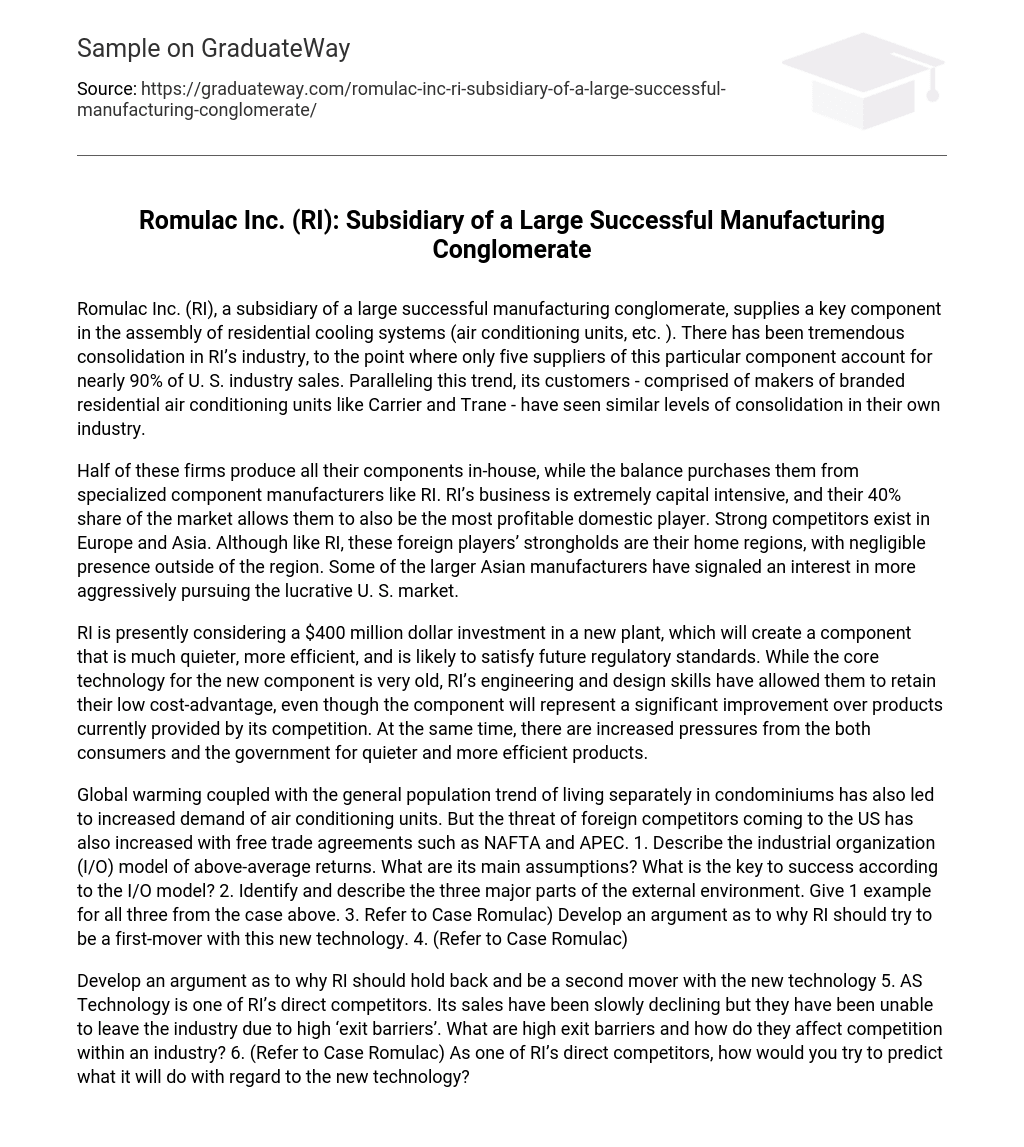Romulac Inc. (RI), a subsidiary of a large successful manufacturing conglomerate, supplies a key component in the assembly of residential cooling systems (air conditioning units, etc. ). There has been tremendous consolidation in RI’s industry, to the point where only five suppliers of this particular component account for nearly 90% of U. S. industry sales. Paralleling this trend, its customers – comprised of makers of branded residential air conditioning units like Carrier and Trane – have seen similar levels of consolidation in their own industry.
Half of these firms produce all their components in-house, while the balance purchases them from specialized component manufacturers like RI. RI’s business is extremely capital intensive, and their 40% share of the market allows them to also be the most profitable domestic player. Strong competitors exist in Europe and Asia. Although like RI, these foreign players’ strongholds are their home regions, with negligible presence outside of the region. Some of the larger Asian manufacturers have signaled an interest in more aggressively pursuing the lucrative U. S. market.
RI is presently considering a $400 million dollar investment in a new plant, which will create a component that is much quieter, more efficient, and is likely to satisfy future regulatory standards. While the core technology for the new component is very old, RI’s engineering and design skills have allowed them to retain their low cost-advantage, even though the component will represent a significant improvement over products currently provided by its competition. At the same time, there are increased pressures from the both consumers and the government for quieter and more efficient products.
Global warming coupled with the general population trend of living separately in condominiums has also led to increased demand of air conditioning units. But the threat of foreign competitors coming to the US has also increased with free trade agreements such as NAFTA and APEC. 1. Describe the industrial organization (I/O) model of above-average returns. What are its main assumptions? What is the key to success according to the I/O model? 2. Identify and describe the three major parts of the external environment. Give 1 example for all three from the case above. 3. Refer to Case Romulac) Develop an argument as to why RI should try to be a first-mover with this new technology. 4. (Refer to Case Romulac)
Develop an argument as to why RI should hold back and be a second mover with the new technology 5. AS Technology is one of RI’s direct competitors. Its sales have been slowly declining but they have been unable to leave the industry due to high ‘exit barriers’. What are high exit barriers and how do they affect competition within an industry? 6. (Refer to Case Romulac) As one of RI’s direct competitors, how would you try to predict what it will do with regard to the new technology?





